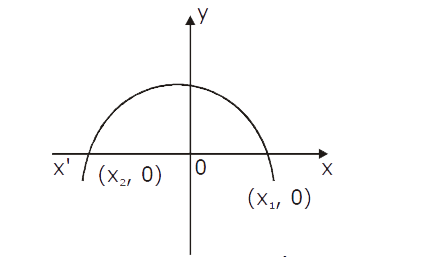The parallelogram is bounded by the lines y=ax+c;y=ax+d;y=bx+c and y=bx+d and has the area 18 the parallelogram bounded by the lines y=ax+c,y=ax−d,y=bx+c and y=bx−d has area 72 given that a,b,c&d are positive numbers find the smallest possible value of (a+b+c+d)
13
14
15
16
The correct Answer is:D
Step by step video, text & image solution for The parallelogram is bounded by the lines y=ax + c; y=ax + d; y=bx + c and y=bx+ d and has the area 18 the parallelogram bounded by the lines y=ax+c,y=ax-d,y=bx+c and y=bx-d has area 72 given that a,b,c&d are positive numbers find the smallest possible value of (a+b+c+d) by Maths experts to help you in doubts & scoring excellent marks in Class 12 exams.
Updated on:21/07/2023Topper's Solved these Questions
- CARTESIAN SYSTEM OF RECTANGULAR COORDINATES AND STRAIGHT LINES BOOK - MCGROW HILL PUBLICATIONCHAPTER - CARTESIAN SYSTEM OF RECTANGULAR COORDINATES AND STRAIGHT LINES EXERCISE - SOLVED EXAMPLES (LEVEL 2) SINGLE CORRECT ANSWER TYPE QUESTIONS
30 Videos
- CARTESIAN SYSTEM OF RECTANGULAR COORDINATES AND STRAIGHT LINES BOOK - MCGROW HILL PUBLICATIONCHAPTER - CARTESIAN SYSTEM OF RECTANGULAR COORDINATES AND STRAIGHT LINES EXERCISE - SOLVED EXAMPLES (NUMERICAL ANSWER TYPE QUESTIONS)
25 Videos
- CARTESIAN SYSTEM OF RECTANGULAR COORDINATES AND STRAIGHT LINES BOOK - MCGROW HILL PUBLICATIONCHAPTER - CARTESIAN SYSTEM OF RECTANGULAR COORDINATES AND STRAIGHT LINES EXERCISE - SOLVED EXAMPLES (CONCEPT - BASED) SINGLE CORRECT ANSWER TYPE QUESTIONS
15 Videos
- AREA BY INTEGRATIONBOOK - MCGROW HILL PUBLICATIONCHAPTER - AREA BY INTEGRATIONEXERCISE - Question from Previous Years. B-Architecture Entrance Examination Papers
12 Videos
- CIRCLES AND SYSTEMS OF CIRCLES BOOK - MCGROW HILL PUBLICATIONCHAPTER - CIRCLES AND SYSTEMS OF CIRCLES EXERCISE - QUESTIONS FROM PREVIOUS YEARS. B-ARCHITECTURE ENTRANCE EXAMINATION PAPERS
17 Videos
Similar Questions
Knowledge Check
If the lines ax+12y+1=0 bx+13y+1=0 and cx+14y+1=0 are concurrent then a,b,c are in
AA.P.BG.P.CH.P.Dnone of theseA, B C and D are the points of intersection with the coordinate axes of the lines ax+by=ab and bx+ay=ab, then
AA, B, C, D are concyclicBA, B, C, D form a parallelogramCA, B, C, D form a rhombusDNone of the aboveIf a+b+c=0andp≠0 then lines ax+(b+c)y=p,bx+(c+a)y=pandcx+(a+b)y=p
Ado not intersectBintersectCare concurrentDperpendicular
The diagram shows the grap of y=ax2+bx+c. Then

View SolutionIf the curve y=ax2+bx+c,x∈R ,passes through the point (1,2) and the tangent line to this curve at origin is y=x, then the possible values of a,b,c are:
View SolutionIf a+b+c=0andp≠0, the lines ax+(b+c)y=p,bx+(c+a)y=pandcx(a+b)y=p
View SolutionIf y=ax2+bx+c is the reflection of parabola y=x2−4x+1 about the line y=3,a+b+c=
View SolutionThe the area bounded by the curve |x| + |y| = c (c > 0) is 2c2, then the area bounded by |ax + by| + |bx - ay| = c where a2+b2=1 is
View Solution
